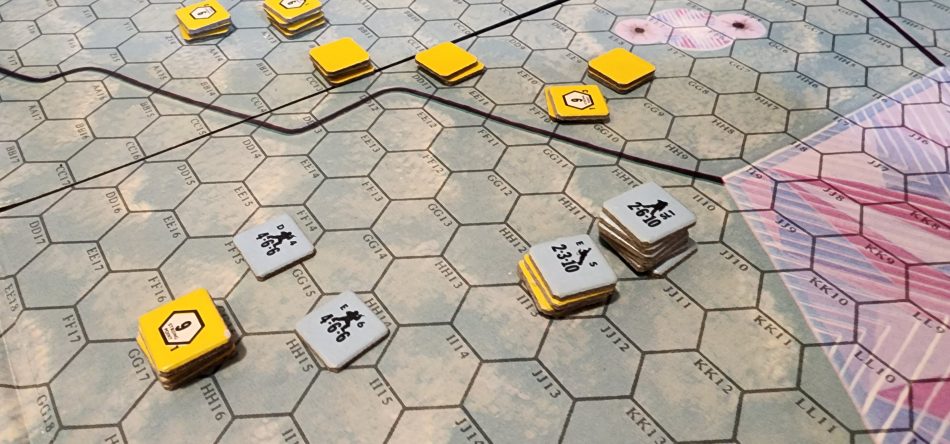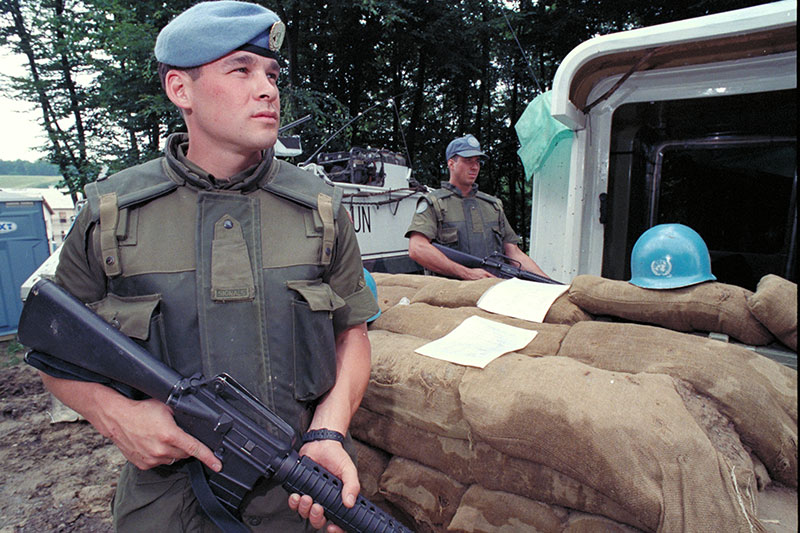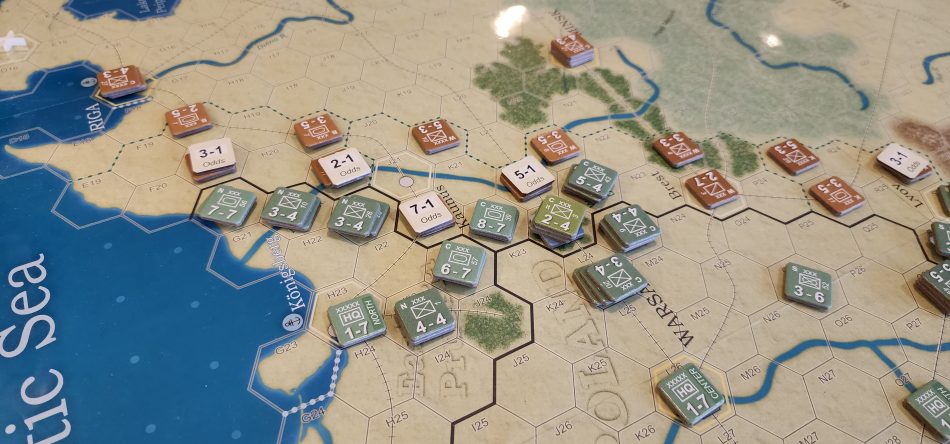Wargaming as Professional Development in the Canadian Army
By David Garvin
As many who frequent this site know, wargaming is used by many modern militaries as a means to train and develop their leaders. There are semi-professional organizations, and there are military colleges and organizations that use wargames as an educational and development tool. One of the latest armies to dip its toes into wargaming as a professional development tool is the Canadian Army. Active since 2018, many of the wargames promoted are computer or PC based. In an effort to further the use of wargames as a tool for professional development, I recently suggested to my commander that I host a symposium based on this very idea. I have yet to deliver this symposium; this is set for April. That said, my method has been in development for a month or so no, and there are no trade secrets, so the aim of this short article is to whet the appetites of those who may be considering something similar. That said, I’m not going to be advocating computer or PC-based games; I will instead focus entirely on board wargames.

My aim is to first show how wargames have been used by professional militaries throughout the ages, and especially since the Prussians developed Kriegsspiel in the 1800’s. My aim in so doing is to demonstrate that the use of games is not a new concept and one that how shown its worth in history. As but one example, I intend to show how the commercially available board game, Advanced Squad Leader was used by US Marines prior to the liberation of Kuwait in 1991 to develop tactics to assault Iraqi positions. This is a specific example of a specific game used to develop a specific plan for a specific situation. I of course intend to go beyond that, even advocating that certain games with absolutely no bearing on military history are of great use. My one example? None other than Starship Troopers by Avalon Hill.

Even though the game is based entirely on a science fiction novel, the game has merit for use for professional development. All factions in the game have certain characteristics, and it is in the players’ best interests to know these factors and to develop conclusions based on these. What weapons do I have? How far can they reach? What about my enemies? How will I deal with them? What Starship Troopers does is force the player (or, in this case, the army officer) to look at the situation in hand and to throw away any pre-conceived notions, which is a real problem when dealing with real-life situations. One relevant example of this causing some hardship for army leadership happened in the early 1990s in the former Yugoslavia. 4th Canadian Mechanized Brigade Group, which had as its focus the defence (sic) of West Germany, deployed units to Bosnia as part of the United Nations Protection Force (UNPROFOR). No longer were the units focused on setting up reverse-slope defenses with interlocking arcs of fire; its leaders had to contend with up to three warring factions, refugees, war crimes and more. In short, the situation was entirely new and unknown.

Another aim of the symposium will be to illustrate three general aims of professional wargaming: education, experiential and experimental. I aim to show the many uses of gaming, from the lowest level up to strategic planning, but my focus will be on the tactical and operational. Not only will I show that games can be used to teach how to Take that Hill, but also to plan even logistical support to operations. The main lesson is that when playing wargames, the aim isn’t to beat the game itself, but rather to analyze a situation, make a decision and then watch the consequences of that decision, vis-a-vis an opponent who is doing the same thing but with competing objectives. A characteristic of this lesson is that it is safe-to-fail. If you make a wrong decision and your force ends up wiped out or you fail to properly support that platoon with commodities; it’s okay! Nobody died and as long as a proper after-action review (AAR) is completed so that lessons-learned are emphasized, then the wargame has been a success.

So, that’s it. I have another month and a bit to prepare for the symposium, and at the very end, I intend on presenting the participants with a problem to solve using a wargame. Based on a scenario from Advanced Squad Leader Starter Kit #1 (ASL SK 1), I will have them develop a plan for one side in the scenario. I will not try to teach them how to play the game, but I will use various characteristics from the game (terrain, firepower of units, objectives, etc) with just enough information for them to develop a plan. They will then brief back and then at the end, I will seek feedback from the participants on the symposium. As an added bonus, I will give away by raffle an in-shrink copy of ASL SK 1! With luck, I’ll be asked to teach the winner how to play the game! Keep watching this site to see how it goes!
David Garvin is an active-duty Canadian Army Officer who has formerly been an instructor at the Combat Training Centre in Gagetown, NB, Canada.

Great article! Loved reading it.
Thanks, Nicholas!
For everyones SA – the professional Wargaming Section of the Canadian Armed Forces is based at the CJWC (Canadian Joint Warfare Centre )in Ottawa.
We are part of the Joint Research and Analysis Branch, and have been designing, developing and running wargames for the CAF for the last 4 years or so. We also run a training course for the CAF, over 100 officers and SNCO’s have attended in the last 3 years, it is a week long and is run in Ottawa. Units send personnel form their locations form all arms and services.
We are running about 1 game per month on average right now, from tactical to strategic, all domains including space and cyber, and both analogue and digital.
We are part of the Canadian Joint Operations Command and are tasked for operational and development games by the various L1’s.
We have a full time staff of 4 contractors and a uniformed section head – currently manned by the RCN with a Ly Cdr, our CO is a CANSOFCOM Lt Col.
Thank you for this, David. I have completed the “Wargame Advisor” course on the Defence Learning Network, but haven’t been up to Ottawa for the in-person course.
Cheers!
Great initiative. Wargaming is not nearly as present as it should be in the CF. Now, Squad Leader is not an easy first step but a good one. Keep us in the loop of your progress!
Hi Jocelyn.
Thank you for your comments. I will update. I’ll be delivering the Professional Development session in two weeks.
David